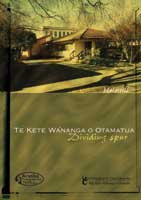Christchurch City Council consulted with Mahaanui Kurataiao Ltd (MKT) and the two local rūnanga on a te reo Māori name for the facility to reflect the local area. The consensus was for Te Hāpua, which roughly translates to “the lagoons”. This refers to the outdoor pool, as well as the location of the complex alongside Te Tauawa-a-Maka/Nottingham Stream, an upper tributary of the Huritini/Halswell River. This is in turn an important source of Lake Ellesmere (Te Waihora), which is very important to rūnanga.
Listen to the Māori name [106KB MP3]
Te Kete Wānanga o Ōtūmatua
Along with a new facility opened in 2015, Halswell's library at Te Hāpua: Halswell Centre received an updated te reo Māori name. Previously referred to as "Te Kete Wānanga o Otamatua", Christchurch City Libraries' branch at Halswell is now know as "Te Kete Wānanga o Ōtūmatua".
Find out how Te Hāpua: Halswell Centre got its name.
Meeting rooms
The room names were gifted by tangata whenua and represent the fish that live in the waterways. This is reflected in the images on the shelf ends and original art in the children's library:
- Mohoao (black flounder)
- Hao (silver bellied eel)
- Piharau (lamprey eel)
- Aua (yellow eyed mullet)
- Īnaka (whitebait species)
- Kōkopu (whitebait species)
- Kōaro (whitebait species)
Library Names: the Stories of the Bilingual Names for Christchurch City Libraries (former Halswell Library)

Otamatua, from time to time seen as Otumatua is a spur that divides the Hoon Hay Valley from Kennedy's Bush Valley, which runs from Cass Peak down to the Halswell Quarry area.
Other associated Māori names in this area include the wriggly part of the upper Halswell River, which was called Huritini and means 'many turns'. Another two names for different parts of the Halswell River were recognized as Te Tau Awa a Maka and Te Heru o Kahukura.
The next Māori name about Halswell has a nautical flavour, as it is called O Te Ika i te Ana - which means 'the fish in the cave.' Another cave or rock shelter in the area is Te Ana a Te Wera 'The cave of Te Wera'. These caves had many uses for local Canterbury Māori such as temporary shelters from storms, campsites used for stopovers for perhaps one night only and for protection from invading or marauding war parties.
Te Ana Whakairo - 'The cave of rock carvings.' Cave at the foot of the Lansdown valley on a property once owned by Rodger Duff. Kāti Mamoe from the Manuka pā used it as a hideout from other iwi during times of war.
The name 'Halswell' evidently came from Edmund Storr Halswell, a barrister of Temple Bar, whose home was in Radnorshire, Wales who came to the colony in 1841 as Commissioner of Native Reserves for the New Zealand Company. He was a member of the Canterbury Association who sat on the committee of management.
